 To enhance service speed and avoid tariff delays, we've opened a US warehouse. All US orders ship directly from our US facility.
To enhance service speed and avoid tariff delays, we've opened a US warehouse. All US orders ship directly from our US facility.
| Cat. No. | Product Name | Field of Application | Chemical Structure |
|---|---|---|---|
| DC67299 | N4-Acetylcytidine triphosphate sodium Featured |
N4-Acetylcytidine triphosphate sodium serves as an efficient substrate in T7 Polymerase-driven in vitro transcription reactions, demonstrating its ability to be successfully incorporated into various templates. This modified nucleotide offers a unique advantage in expanding the scope of RNA synthesis, enabling the production of acetylated RNA molecules with potential applications in research and therapeutic development. Its compatibility with T7 Polymerase highlights its utility in generating tailored RNA constructs, providing researchers with a versatile tool for exploring RNA modifications and their functional implications.
More description
|
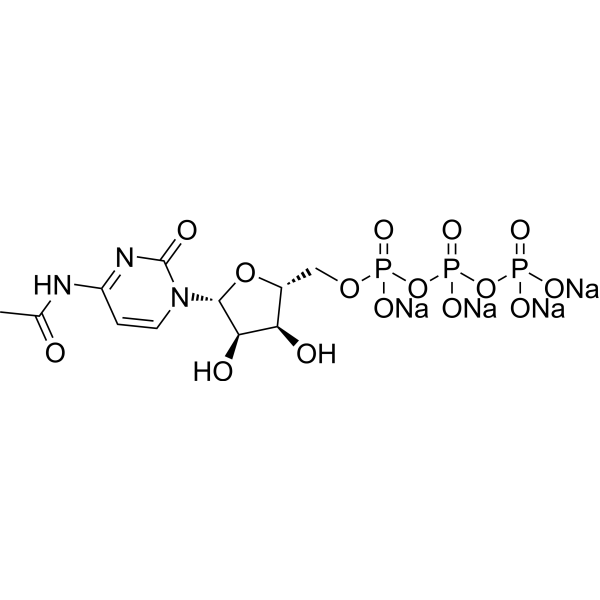
|
| DC46265 | N4-Acetylcytidine triphosphate Featured |
N4-Acetylcytidine triphosphate is efficiently used as a substrate in T7 Polymerase-catalyzed in vitro
transcription and can be incorporated into multiple templates.
More description
|

|
| DC7666 | MK-0752 Featured |
MK-0752 is a moderately potent γ-secretase inhibitor, it is used as a head group of MK16 which is a a novel blood-brain barrier (BBB)-crossing lipid nanoparticle (BLNP) platform developed for efficient mRNA delivery to the central nervous system (CNS).
More description
|

|
| DC73757 | NCATS-SM7270 Featured |
NCATS-SM7270 is a highly specific small molecule inhibitor of NADPH oxidase 2 (NOX2), exhibiting an IC50 value of 2.1 µM in polymorphonuclear leukocytes (PMN). It effectively inhibits NOX2 activity in both primary human and mouse granulocytes, demonstrating its targeted and potent mechanism of action.
More description
|

|
| DC60580 | Endosidin5(ES5) Featured |
Endosidine 5 (ES5), is one of the most potent small molecules interferes with recycling endosomes through Annexin A6, thereby promoting the release and expression of mRNA into the cytoplasm. The delivered mRNAs is greatly enhanced via inhibition of endocytic recycling in cells and in live mice. NAV2729 (NAV) and endosidin 5 (ES5), resulted in significant enhancement (1.5–2 folds) of LNP-mediated delivery of Fluc mRNAs. Incubation of NAV and ES5 together caused modest further increases in Fluc expression in comparison to the sole application of either compound.
More description
|

|
| DC45847 | ART558 Featured |
ART558 is a nanomolar potent, selective, low molecular weight, allosteric DNA polymerase activity of Polθ inhibitor (IC50=7.9 nM). Inhibition of TMEJ with ART558 increases the efficiency of HDR-mediated repair on Cas9-induced DSBs, most profoundly in combination with a NHEJ/DNA-PKcs inhibitor.
More description
|

|
| DC36761 | Bropirimine Featured |
Bropirimine is a synthetic agonist for toll-like receptor 7 (TLR7). Bropirimine inhibits differentiation of osteoclast precursor cells into osteoclasts via TLR7-mediated production of IFN-β. Bropirimine is an orally active immunomodulator that has demonstrated anticancer activity in transitional cell carcinoma in situ (CIS) in both the bladder and upper urinary Bropirimine could enhance the transfection efficiency to 2-fold to 5-fold of Lipofectamine 3000 and LNP, all of which are currently approved for clinical use in the treatment of the most common malignant tumors.
More description
|

|
| DC9284 | SCH58261 Featured |
SCH 58261 is a potent and selective A2a adenosine receptor antagonist with Ki of 2.3 nM and 2 nM for rat A2a and bovine A2a. SCH58261 could enhance the transfection efficiency to 2-fold to 5-fold of Lipofectamine 3000 and LNP, all of which are currently approved for clinical use in the treatment of the most common malignant tumors.
More description
|

|
| DC74398 | HSL119 Featured |
HSL119 is a highly effective and selective inhibitor of hormonally upregulated neu-associated kinase (HUNK), demonstrating complete suppression of HUNK kinase activity at a concentration of 1 µM in biochemical assays. This compound highlights its precision and potency in targeting HUNK.
More description
|

|
| DC12399 | SH-BC-893 Featured |
SH-BC-893 is a water-soluble, orally bioavailable synthetic sphingolipid that triggers nutrient transporter internalization and also blocks lysosome-dependent nutrient generation pathways in cancer cells, activates protein phosphatase 2A (PP2A), leading to mislocalization of the lipid kinase PIKfyve; selectively kills cells expressing an activated form of the anabolic oncogene Ras in vitro and in vivo.SH-BC-893, increases the activity of antisense oligonucleotides (ASOs) and small interfering RNAs (siRNAs) up to 200-fold in vitro without permeabilizing endosomes. SH-BC-893 treatment trapped endocytosed oligonucleotides within extra-lysosomal compartments thought to be more permeable due to frequent membrane fission and fusion events. Simultaneous disruption of ARF6-dependent endocytic recycling and PIKfyve-dependent lysosomal fusion was necessary and sufficient for SH-BC-893 to increase non-lysosomal oligonucleotide levels and enhance their activity. In mice, oral administration of SH-BC-893 increased ASO potency in the liver by 15-fold without toxicity. More importantly, SH-BC-893 enabled target RNA knockdown in the CNS and lungs of mice treated subcutaneously with cholesterol-functionalized duplexed oligonucleotides or unmodified ASOs, respectively. Together, these results establish the feasibility of using a small molecule that disrupts endolysosomal trafficking to improve the activity of oligonucleotides in extrahepatic tissues.
More description
|

|
| DC11971 | NAV-2729(Grassofermata) Featured |
NAV 2729 (NAV2729) is a chemical potentiator for mRNA-LNPs, increasing the delivery efficiencies of mRNA-LNPs in vitro and in vivo.
More description
|

|
| DC20278 | AZD-7648 Featured |
AZD-7648 is a potent and selective DNA-PK inhibitor. AZD7648,enhances HDR efficiency in CRISPR-Cas9 gene editing by shifting DNA repair from the error-prone NHEJ pathway to the precise HDR pathway, significantly improving gene targeting outcomes in human cells for effective ex vivo gene therapies.
More description
|

|
| DC8040 | STAT3 Inhibitor XVIII, BP-1-102 Featured |
BP-1-102 is a potent, orally bioavailable and selective STAT3 inhibitor.BP-1-102 could enhance the transfection efficiency to 2-fold to 5-fold of Lipofectamine 3000 and LNP, all of which are currently approved for clinical use in the treatment of the most common malignant tumors.
More description
|

|
| DC74445 | FL-1607 Featured |
FL-1607, a novel Fam20C inhibitor, has shown remarkable anti-proliferative effects in triple-negative breast cancer (TNBC) cells. This compound induces apoptosis and significantly reduces the migration ability of MDA-MB-468 cells, underscoring its potential as a promising therapeutic agent for TNBC treatment.
More description
|

|
| DC70591 | mCLB073 Featured |
mCLB073 is an advanced, orally active small molecule agonist specifically designed to target Mtb adenylyl cyclase Rv1625c. As an optimized derivative of V-59, it demonstrates significantly enhanced potency and efficacy for in vivo applications. In cholesterol-based media, mCLB073 shows a remarkable 17-fold increase in activity against Mtb compared to its predecessor, V-59, while retaining favorable pharmacokinetic characteristics and a strong safety profile. In preclinical studies, oral administration of mCLB073 at 30 mg/kg led to a substantial reduction in Mtb colony-forming units (CFUs) in the lungs of mice, accompanied by a 45% decrease in lung pathology severity. These findings highlight its potential as a promising therapeutic candidate for tuberculosis treatment.
More description
|
.gif)
|
| DC8604 | Pim-1 Inhibitor 2 |
PIM1-IN-2 is a highly effective and ATP-competitive inhibitor of Pim-1, demonstrating a Ki value of 91 nM. Unlike traditional inhibitors, it interacts with the ATP-binding kinase hinge region without relying on the formation of standard hydrogen bonds, showcasing a unique mechanism of action. This distinctive approach highlights its potential as a promising therapeutic agent.
More description
|

|
| DC71716 | Obeldesivir (GS-5245, ATV006) Featured |
ATV006 is a potent, orally active antiviral agent and ester prodrugs of GS-441524. ATV006 inhibits the replication of SARS-CoV-2 and its variants. ATV006 can be used for SARS-CoV-2 research.
More description
|

|
| A480 | Abbv-011 Biosimilar(Anti-SEZ6 Reference Antibody) Featured |

|
|
| A479 | Sanofi patent anti-PAI-1 Biosimilar(Anti-SERPINE1 Reference Antibody) Featured |

|
|
| A478 | Pepinemab Biosimilar(Anti-SEMA4D / CD100 Reference Antibody ) Featured |
Pepinemab (VX 15/2503) is a human monoclonal antibody against SEMA4D, a signalling protein 4D (SEMA4D), also known as CD100, which is a regulator of neuronal development and plays a role in a variety of cellular processes. Pepinemab can be used in the study of various neurodegenerative diseases such as Alzheimer's disease by blocking the activity of SEMA4D.
More description
|

|
| A477 | Duke anti-NAv1.7 Biosimilar(Anti-SCN9a / Nav1.7 Reference Antibody) Featured |

|
|
| A476 | Wuhan U. patent anti-Nav1.9 Biosimilar(Anti-SCN11a / Nav1.9 Reference Antibody) Featured |

|
|
| A475 | LOP628 Biosimilar(Anti-SCFR / c-Kit / CD117 Reference Antibody) Featured |

|
|
| A474 | CDX-0158 Biosimilar(Anti-SCFR / c-Kit / CD117 Reference Antibody) Featured |

|
|
| A473 | LK-1 Biosimilar(Anti-S100A4 Reference Antibody) Featured |

|
|
| A472 | NG-101 Biosimilar(Anti-RTN4 / NOGO Reference Antibody) Featured |

|
|
| A471 | Atinumab Biosimilar(Anti-RTN4 / NOGO Reference Antibody) Featured |
Atinumab (6A3-IgG4) is an antibody. Teropavimab can be used for the research of spinal cord injury (SCI).
More description
|
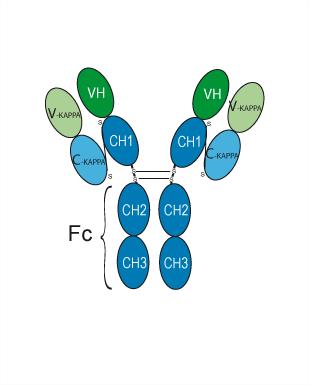
|
| A470 | Ozanezumab Biosimilar(Anti-RTN4 / NOGO Reference Antibody) Featured |
Ozanezumab (GSK1223249) is an anti-Nogo-A (neurite outgrowth inhibitor A) monoclonal antibody. Ozanezumab can be used in amyotrophic lateral sclerosis (ALS) and multiple sclerosis research.
More description
|
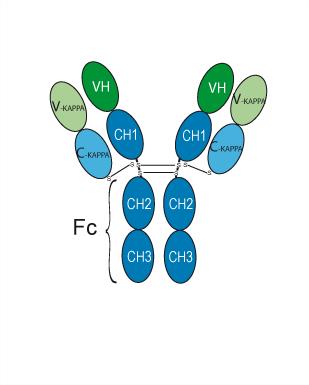
|
| A469 | Motavizumab Biosimilar(Anti-RSV-F Reference Antibody) Featured |
Motavizumab (MEDI-524) is an anti-human RSV (respiratory syncytial virus) monoclonal antibody. Motavizumab can be used in respiratory syncytial virus infection in high-risk infants research.
More description
|
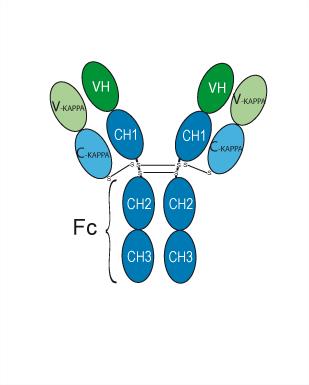
|
| A468 | Palivizumab Biosimilar(Anti-RSV-F Reference Antibody) Featured |
Palivizumab (MEDI 493) is a humanized monoclonal antibody against respiratory syncytial virus (RSV). Palivizumab can bind to RSV F protein with a Kd value of 1.4 nM. Palivizumab can prevent respiratory syncytial virus infection in cotton mice.
More description
|
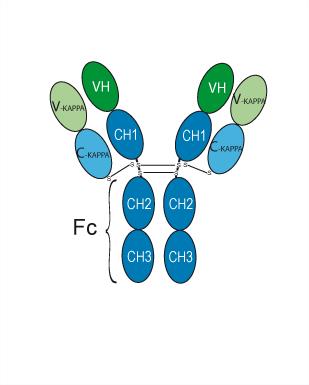
|